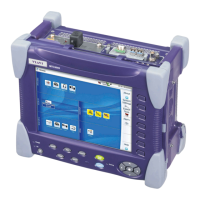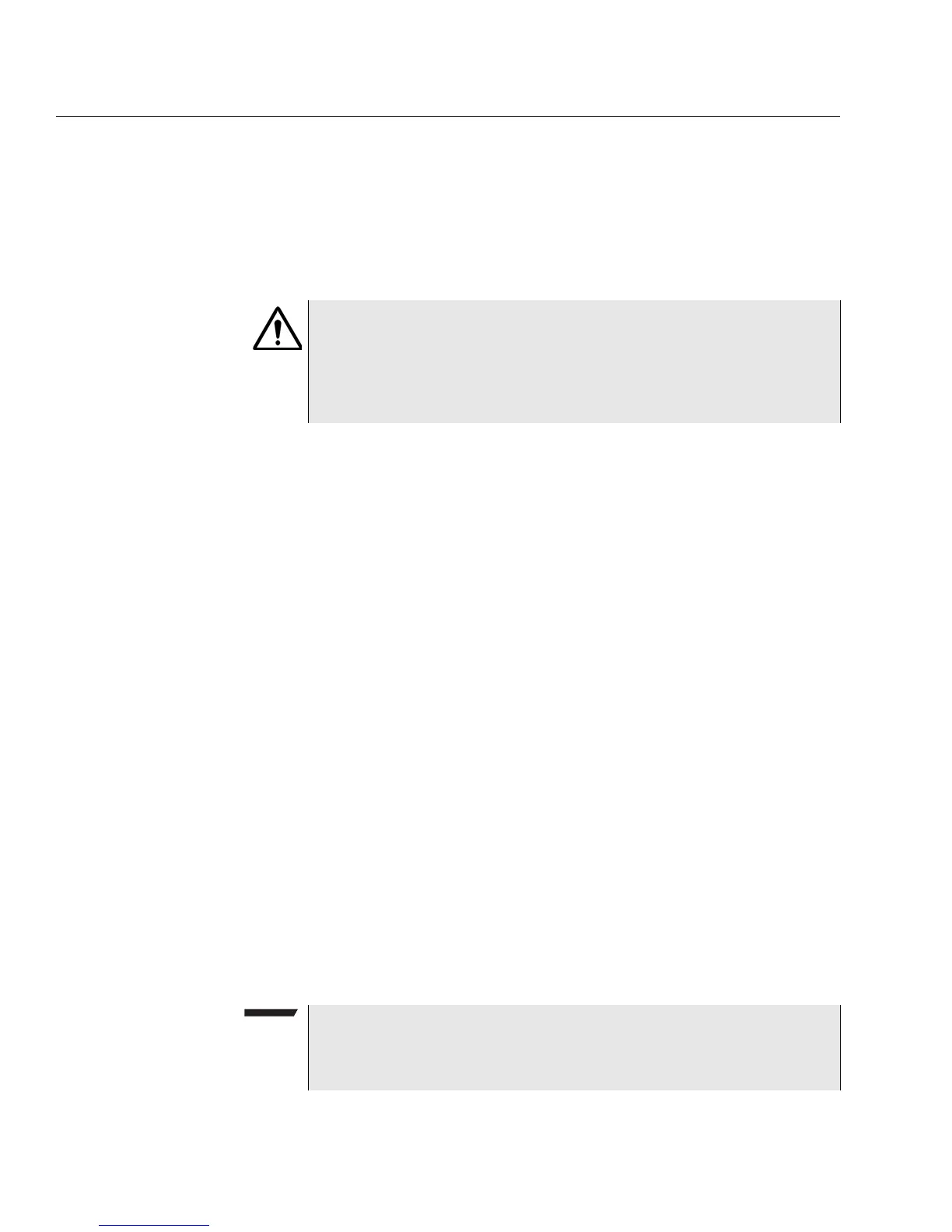Remote Operation Getting Started Guide
Getting the module port number
6 Transport Module, DMC, MSAM, and 5800 Remote Operation
Getting the module port number
Starting remote
operation
The first step is to start remote operation
1 Open a TCP/IP socket connection to the unit on port 8000.
2 Start remote operation.
*REM
Obtaining the module
port number
Before issuing any SCPI commands, a socket connection to the module must be estab-
lished.
Module identification and location
In order to establish a connection, the module must be identified and located.
Since multiple layers (slices) of transport modules (MTS-8000) and installation locations
(sides) for Multi-Service Application Modules (MSAM) are possible, the exact location of
the module to which a connection is being made must be verified.
There are two arguments that are required in the following commands and queries that
establish the exact physical location of the module being used in the test. These are indi-
cated as <side>
and <slice>. These are required arguments and must be filled with a
value as follows:
<side>
–PWRS - Power Side - specify this location when connecting to an MSAM connected to
an MTS-6000A
OR
on the right side (viewed from front of base unit) of MTS-8000 dual carrier (same side
as power connector).
– OPPS - Opposite Side - specify this location when connecting to an MSAM connected
to the left side (viewed from front of base unit) of MTS-8000 dual carrier (far side from
power connector).
– BOTH - specify this location when connecting to full-width Transport Module (on MTS-
8000).
IMPORTANT:
The *REM command must always be the first command sent after opening a
socket (to port 8000, the module port, or the RC port). On the ANT platforms
this was not necessary - they allowed you to connect, access applications,
disconnect, then reconnect and continue without having to send *REM
again; on the MTS platforms, it is required.
NOTE
The <side> parameter was added to the ":SYST:FUNC" commands in ver-
sion 8.0 of the MTS-8000 BERT software and version 3.0 on the MTS-6000.
For previous versions, this parameter must be omitted.

